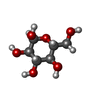+Search query
-Structure paper
| Title | Targeting Persistence through Inhibition of the Trehalose Catalytic Shift. |
|---|---|
| Journal, issue, pages | ACS Infect Dis, Vol. 10, Issue 4, Page 1391-1404, Year 2024 |
| Publish date | Apr 12, 2024 |
 Authors Authors | Karishma Kalera / Rachel Liu / Juhyeon Lim / Rasangi Pathirage / Daniel H Swanson / Ulysses G Johnson / Alicyn I Stothard / Jae Jin Lee / Anne W Poston / Peter J Woodruff / Donald R Ronning / Hyungjin Eoh / Benjamin M Swarts /  |
| PubMed Abstract | Tuberculosis (TB), caused by (Mtb), is the leading cause of death worldwide by infectious disease. Treatment of Mtb infection requires a six-month course of multiple antibiotics, an extremely ...Tuberculosis (TB), caused by (Mtb), is the leading cause of death worldwide by infectious disease. Treatment of Mtb infection requires a six-month course of multiple antibiotics, an extremely challenging regimen necessitated by Mtb's ability to form drug-tolerant persister cells. Mtb persister formation is dependent on the trehalose catalytic shift, a stress-responsive metabolic remodeling mechanism in which the disaccharide trehalose is liberated from cell surface glycolipids and repurposed as an internal carbon source to meet energy and redox demands. Here, using a biofilm-persister model, metabolomics, and cryo-electron microscopy (EM), we found that azidodeoxy- and aminodeoxy-d-trehalose analogues block the Mtb trehalose catalytic shift through inhibition of trehalose synthase TreS (Rv0126), which catalyzes the isomerization of trehalose to maltose. Out of a focused eight-member compound panel constructed by chemoenzymatic synthesis, the natural product 2-trehalosamine exhibited the highest potency and significantly potentiated first- and second-line TB drugs in broth culture and macrophage infection assays. We also report the first structure of TreS bound to a substrate analogue inhibitor, obtained via cryo-EM, which revealed conformational changes likely essential for catalysis and inhibitor binding that can potentially be exploited for future therapeutic development. Our results demonstrate that inhibition of the trehalose catalytic shift is a viable strategy to target Mtb persisters and advance trehalose analogues as tools and potential adjunctive therapeutics for investigating and targeting mycobacterial persistence. |
 External links External links |  ACS Infect Dis / ACS Infect Dis /  PubMed:38485491 / PubMed:38485491 /  PubMed Central PubMed Central |
| Methods | EM (single particle) / X-ray diffraction |
| Resolution | 2.8 - 3.6 Å |
| Structure data | EMDB-42478, PDB-8uqv:  PDB-8uzh: |
| Chemicals |  ChemComp-GLC: 
ChemComp-XVC:  ChemComp-CA:  ChemComp-HOH: |
| Source |
|
 Keywords Keywords | CYTOSOLIC PROTEIN / TreS / Trehalose Synthase / Mycobacterium tuberculosis / 6-TreAz / SUGAR BINDING PROTEIN |
 Movie
Movie Controller
Controller Structure viewers
Structure viewers About Yorodumi Papers
About Yorodumi Papers







